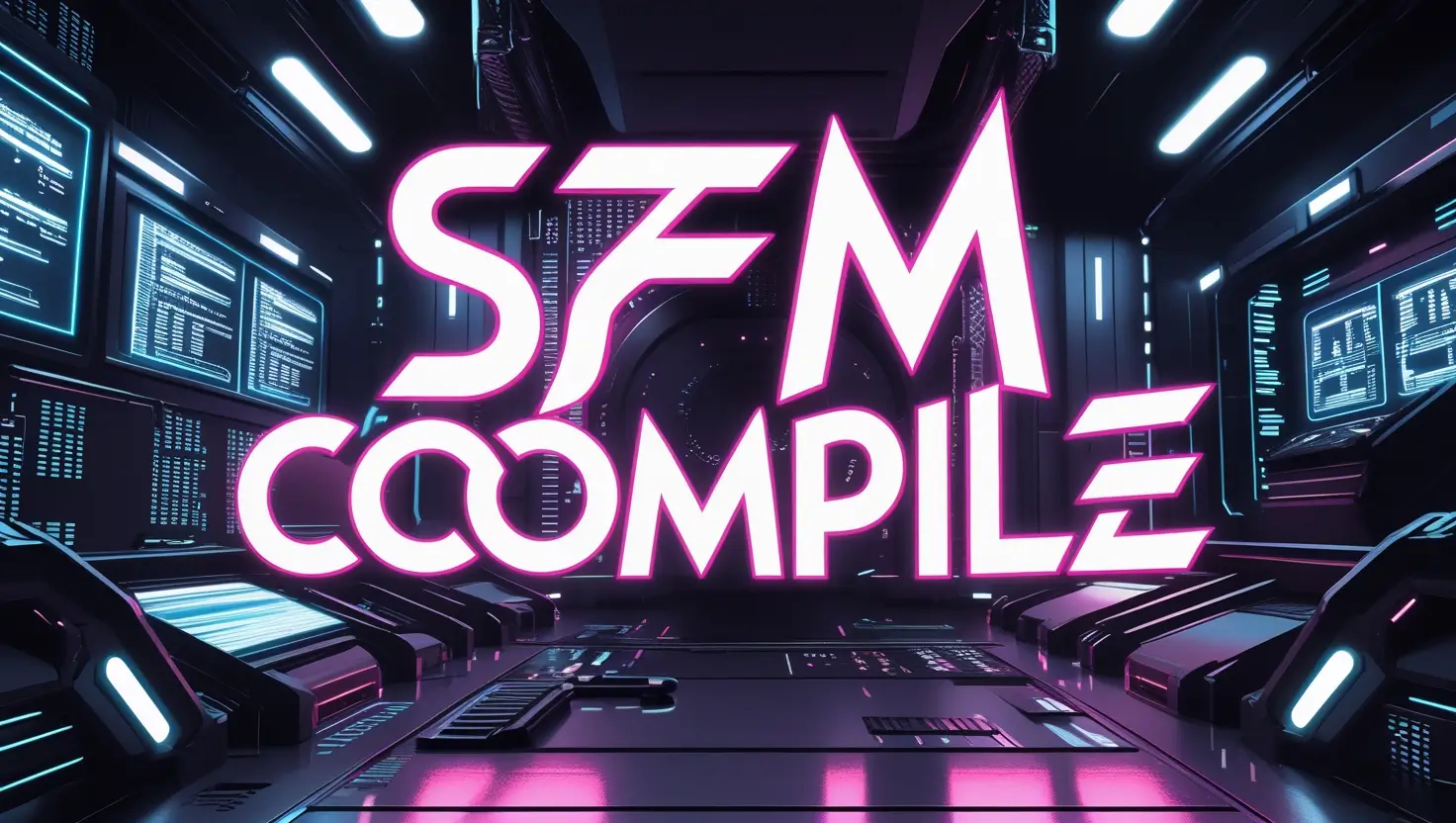SFM Compile: What It Is and How It Works

If you’ve ever worked with SFM (Source Filmmaker), you may have encountered the term SFM compile. This process is key to getting your models, animations, and assets ready for use in your projects. In this article, we’ll dive into what SFM compile is, how it works, and share tips on using it to make your workflow smoother. If you’ve been struggling with getting your models into Source Filmmaker or are curious about the compile process, you’re in the right place. We’ll break things down step-by-step, using simple language and a friendly approach to help you get the most out of your experience.
What is SFM Compile?
The term SFM compile refers to the process of turning raw files, such as models, textures, or animations, into usable formats within the Source Filmmaker environment. SFM is a tool developed by Valve for creating animations and films using assets from games that run on the Source engine. When you work in SFM, you often need to compile these files so that they can be correctly read and used in the program.
During the compile process, SFM takes models created in programs like Blender or 3ds Max, along with textures and animations, and converts them into formats that the Source engine can understand. This step is crucial for getting your creations into the game engine and, ultimately, into your film project.
How Does SFM Compile Work?
To better understand how SFM compile works, think of it as translating a script into a language the program can understand. When you compile a model, you’re essentially telling SFM how to interpret and display your 3D object or animation. The compile process takes care of several key tasks:
- Converting Models: 3D models are often created in programs like Blender or Maya. Before you can use them in SFM, they must be compiled into a format that the Source engine can recognize. This usually involves converting the model into a .mdl file.
- Texturing: After the model is compiled, you also need to ensure that the textures are applied correctly. The compile process takes care of linking the right textures to the right parts of the model.
- Animation: If your model has animations, such as movements or facial expressions, the SFM compile will also convert these animations into a format that SFM can use. This allows you to bring your models to life within your project.
Why is SFM Compile Important?
For anyone working with SFM, understanding and using the SFM compile process is essential. Without it, you won’t be able to use your custom models, textures, or animations in your film projects. The process ensures that all of your assets are optimized and ready to be loaded into the Source Filmmaker engine without issues.
Personally, when I first started using SFM, I ran into trouble when I didn’t fully understand the compile process. It led to models not showing up correctly or animations that wouldn’t play. But once I got the hang of the SFM compile, everything fell into place.
Step-by-Step Guide to SFM Compile
To help you better understand the process, here’s a simplified breakdown of how to perform the SFM compile:
- Create Your Model: First, you need to create or download the 3D model you want to use. This could be something you designed yourself or a pre-made asset.
- Use Crowbar: Most people use a tool called Crowbar to compile their models. Crowbar helps convert models and animations into .mdl files that SFM can use.
- Set Up the Path: Once your model is ready, open Crowbar and set the path to the .qc file, which contains the instructions for compiling your model.
- Compile the Model: Press the Compile button in Crowbar, and the tool will start the process of converting the model into a usable format for SFM.
- Test in SFM: After compiling, launch SFM and check if your model is working as expected. If not, you may need to troubleshoot the compile settings or make adjustments to your model.
Common Issues with SFM Compile and How to Fix Them
When you first start compiling for SFM, you may run into some issues. Here are a few common problems and solutions based on my personal experience:
- Model Doesn’t Show Up: This can happen if you forgot to include the textures or if there’s a problem with the compile path. Make sure all your files are correctly placed and linked.
- Animations Are Glitchy: Sometimes, compiled animations don’t play properly in SFM. This could be due to incorrect frame rates or export settings. Double-check the animation settings before compiling.
- Error Messages: If you get error messages during the compile, it often means there’s a problem with your .qc file. Go through the code and make sure everything is correctly typed and formatted.
Tips for a Smooth SFM Compile Process
Based on what I’ve learned, here are a few tips to make your SFM compile experience smoother:
- Organize Your Files: Keep all your assets, textures, and models in separate folders. This will help keep things neat and make troubleshooting easier.
- Check the Log Files: Crowbar creates log files when you compile. If something goes wrong, these logs can give you clues about what went wrong.
- Don’t Rush: Take your time with each step, and double-check the settings before compiling. Mistakes can easily be made, and it’s worth the extra effort to get things right the first time.
Conclusion
The SFM compile process is an essential step for anyone working with Source Filmmaker. It can seem daunting at first, but with practice and patience, you’ll soon get the hang of it. By following the steps outlined in this article, you can confidently compile your models, animations, and textures, ensuring they work perfectly in your projects. Remember to stay organized and don’t hesitate to troubleshoot when things go wrong. If you’re just getting started, take it slow, and enjoy the learning process!
If you’re ready to dive deeper into SFM or need more guidance, feel free to check out our other resources. And if you’ve had any issues with SFM compile, don’t worry—you’re not alone. Keep experimenting, and soon, you’ll have mastered it!
FAQs
1. What is SFM compile?
SFM compile is the process of converting models, textures, and animations into a format that SFM can understand and use in projects.
2. Do I need special tools for compiling in SFM?
Yes, tools like Crowbar are commonly used to compile models into the correct .mdl file format.
3. Why does my model not show up in SFM after compiling?
This could be due to missing textures or incorrect file paths. Make sure all files are correctly linked.
4. How can I troubleshoot SFM compile errors?
Check the log files created by Crowbar for error details, and ensure your .qc file is correctly formatted.
5. Can I compile animations in SFM?
Yes, animations can be compiled along with models. Make sure the animation settings are correct before compiling.
